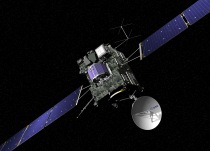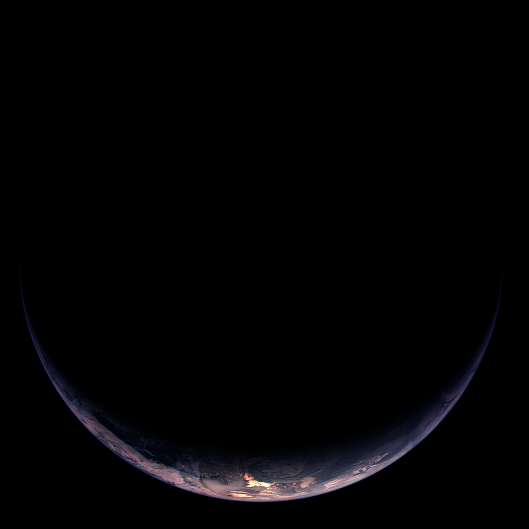Tags
comet, Education, ESA, European Space Agency, Popular science, rosetta, science, space
You might hear about Rosetta in the news later this week, so I decided to give my readers a head-start with an introduction to the mission and its objectives, as well as an idea of what to expect.
What is Rosetta?
 Rosetta is a spacecraft built by the ESA and launched in 2004 to rendez-vous with a comet. Because we don’t have any launch vehicles powerful enough to get Rosetta into the same orbit as the comet, it’s had to take the long route. It’s been travelling for nearly a decade, looping around Mars (once) and Earth (three times) to pick up speed along the way.
Rosetta is a spacecraft built by the ESA and launched in 2004 to rendez-vous with a comet. Because we don’t have any launch vehicles powerful enough to get Rosetta into the same orbit as the comet, it’s had to take the long route. It’s been travelling for nearly a decade, looping around Mars (once) and Earth (three times) to pick up speed along the way.
The spacecraft went into hibernation in mid-2011 to conserve power, and it’s supposed to awaken this week to begin the final approach to its target, comet 67P/Curyumov-Gerasimenko. All alone in space, 600 million kilometers from the sun (that’s four times as far as we are!), it will warm itself up, check in with the control center on Earth, and then press on for the final stretch — “just” nine million kilometers to go.
Here’s one of the pictures Rosetta took of Earth on its way out, showing part of South America and Antarctica:

How do you land on a comet?
The comet’s gravitational pull is only a few ten-millionths of the Earth’s, so Rosetta’s lander, Philae, won’t really be “landing” on the comet as much as docking with it. Philae will gently touchdown on the comet’s surface at roughly walking pace, using its three legs to absorb most of the impact. The legs can also rotate, tilt, or lift the lander to correct its position. After that, ice screws will attach the legs to the surface and the lander will fire a harpoon to anchor itself to the comet.
Wow, that’s quite a trip! What do we get for all that effort?
Rosetta will use a bevy of instruments to analyze the comet in more detail than ever before. The orbiter has cameras and sensors with which to study the comet at different wavelengths, from infrared to microwave, and the lander is equipped with ten instruments of its own, including a mass spectrometer which it will use to analyze the composition of the comet. Rosetta should stay with 67P/Curyumov-Gerasimenko as it makes its way around the Sun, giving us a firsthand view of how the comet changes as it warms up.
Why should I care what a comet is made of?
Comets are the oldest objects in the Solar System, so understanding their composition will help us paint a better picture of the early days of this little corner of the Universe. If the formation of the Solar System isn’t an interesting enough issue, there’s also the question of how life started on Earth. While they’re unlikely to have carried any biological material to Earth, comets may have seeded the young planet with water and organic molecules — the complex chemicals that kickstarted this whole crazy story. Observations with telescopes have given us a pretty good idea of what makes up a comet, but Rosetta’s up-close-and-personal approach will generate a wealth of new data about the physical and chemical processes of these ancient objects. By studying 67P/Curyumov-Gerasimenko, we can learn more about where we came from.
OK. So when does the excitement start?
At the moment, scientists are waiting for Rosetta to wake up and check-in with the control center on Earth. Its alarm clock is set for 10am GMT this Monday, at which point it will start trying to get its bearings and phone home. First, it will start warming up the startrackers, a process which will take six hours. Then it will adjust its orientation to make sure its solar arrays are facing the Sun before using the startrackers to figure out where it is. That done, it will turn towards Earth and send a signal with its high-gain antenna. The vast distance involved — Rosetta is just over 800 million kilometers from us — means that the signal will take 45 minutes to reach our pale blue dot; the earliest the team expects to hear from their little adventurer is between 17.30 and 18.30 GMT.
If everything goes well, Rosetta will continue to approach its target over the next few months. The first images of the comet should arrive in July, though it will be little more than a dot in the pictures. More exciting pictures should come in as the spacecraft approaches the comet, with selection of a landing site scheduled for October and the actual docking due to happen in November. Once docked, the lander will carry out the most important scientific observations during the first 65 hours, the minimum target duration for the mission. It will continue to collect data during a secondary phase that’s supposed to last up to three months, though no one knows how long the lander will actually survive on the comet.
So that’s a bit about the Rosetta mission to whet your appetite. Feel free to ask any questions you might have, and I’ll do my best to get you an answer!


That is just so amazing. There are so many space programs I am completely unaware of – like this one! Just the fact that this mission exists is exciting. Will it be sending back pictures?
Yes, it will be sending pictures. I can now say that with confidence, since I just watched it check in with the ESA control center!
I’m also pretty amazed that I could watch the signal come in live (from 600 million km away!) while sipping tea in the comfort of my office.
If you’d like to follow Rosetta through space, you can use ESA’s Where is Rosetta? webpage, which has a 3D interactive version of the its journey.
Pingback: Selfie from space! | Inspiring Science
Pingback: Hello, 67P/C-G! | Inspiring Science